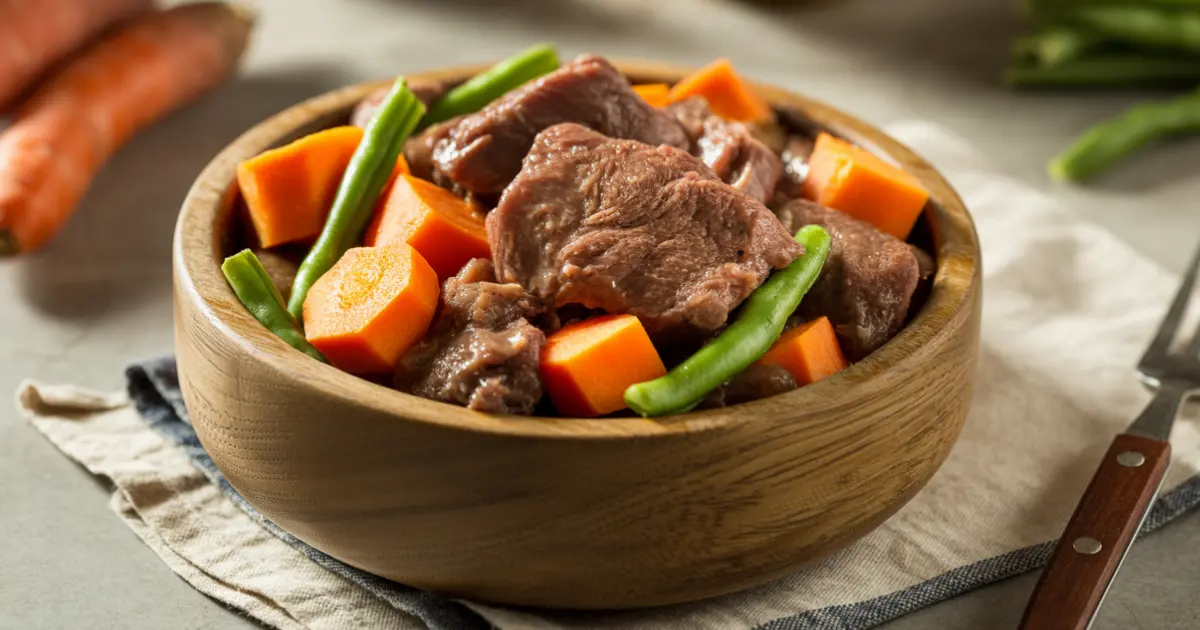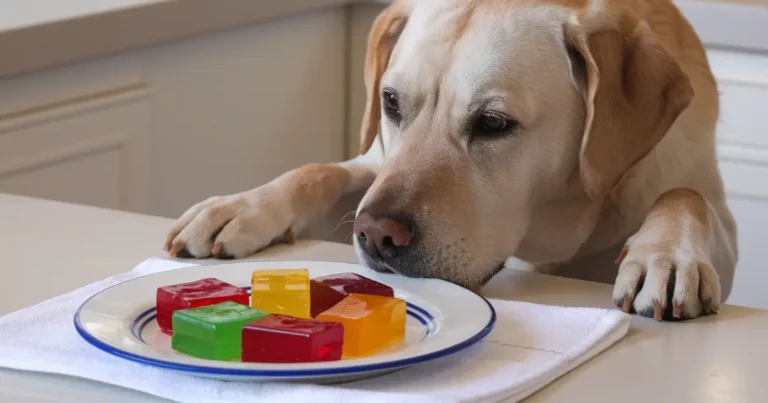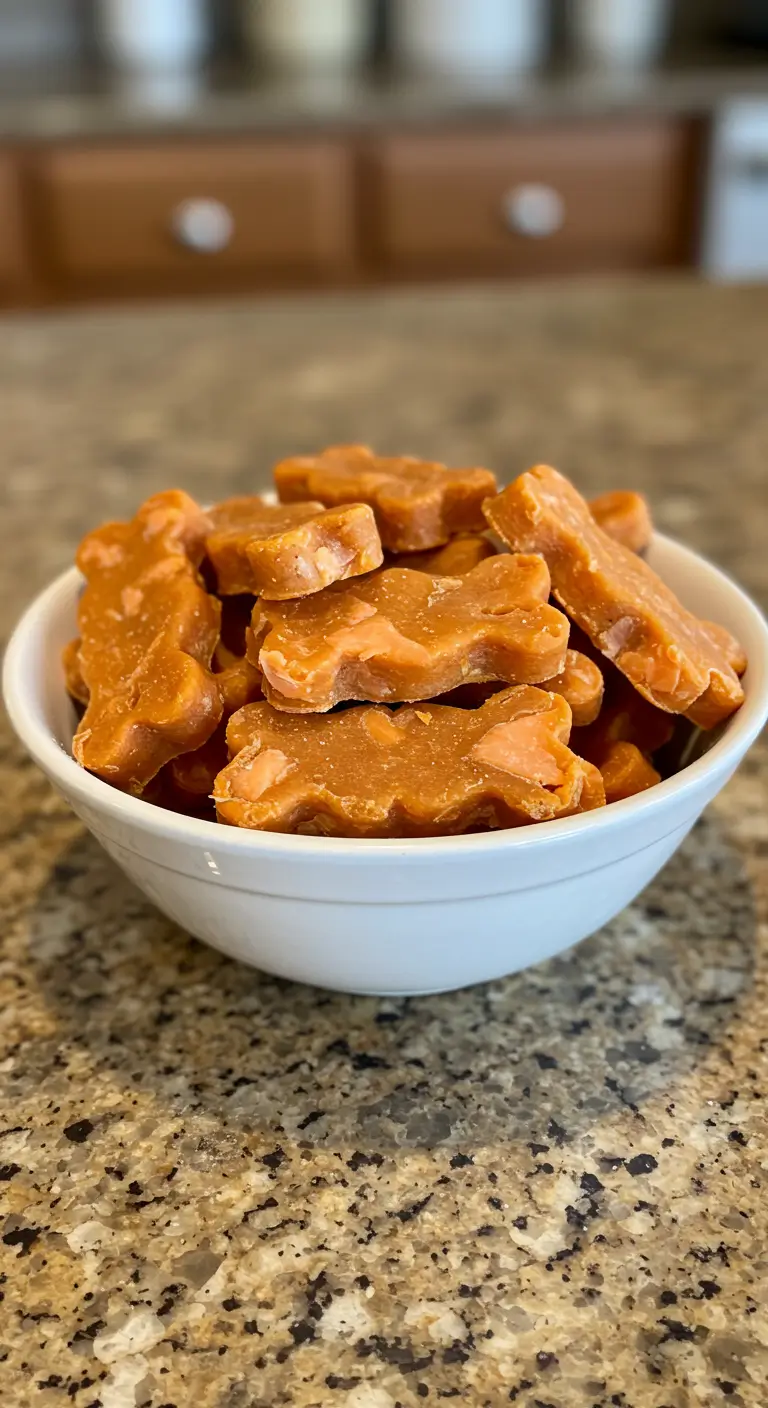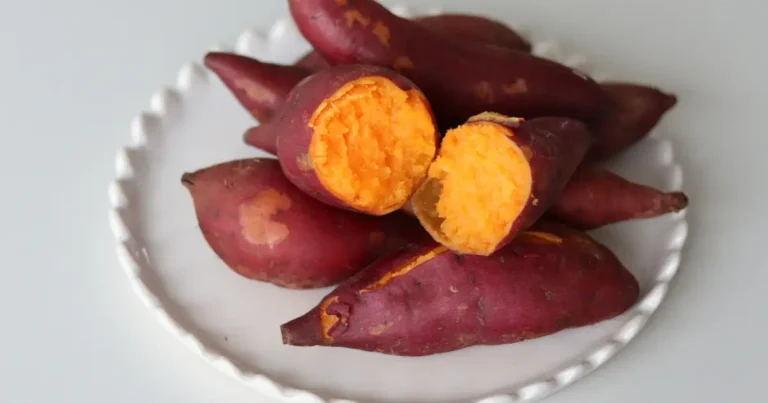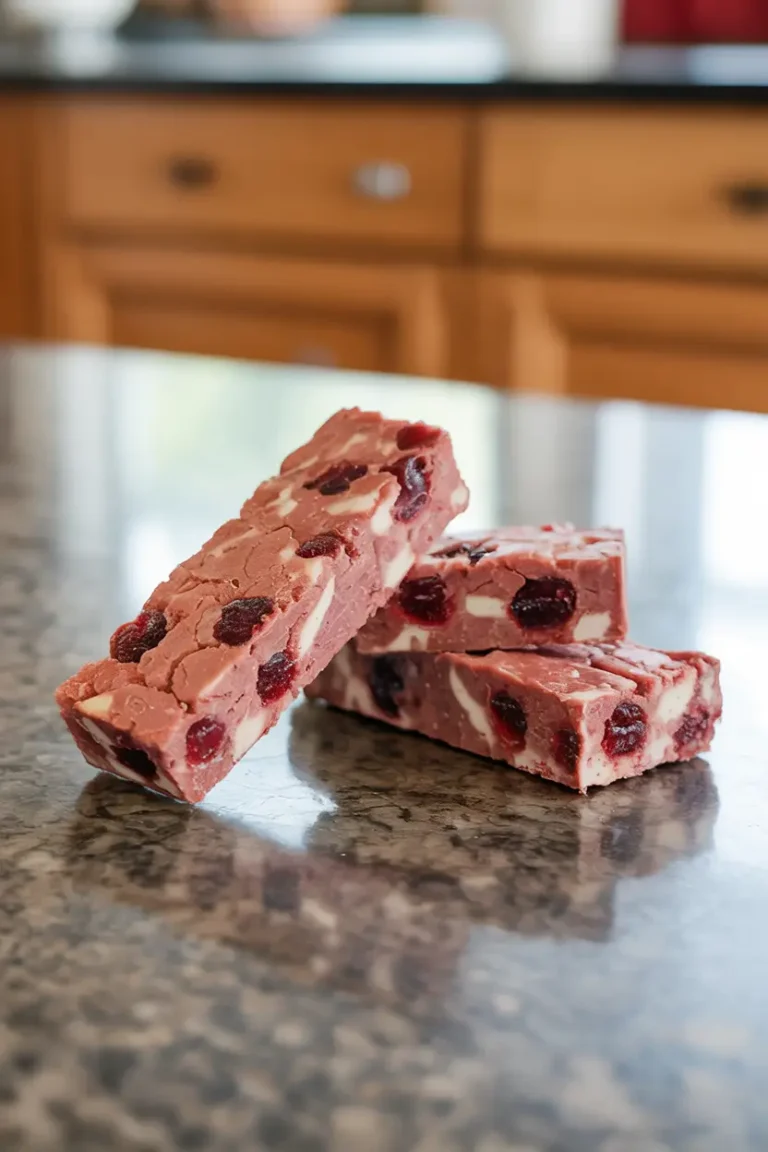Easy Venison Dog Food Recipe: Healthy Homemade Meals
Have you ever watched your dog’s eyes light up at dinner time and wondered if you could make something even better than their regular kibble? Trust me, I’ve been there. After years of feeding my dogs commercial food, I discovered the joy of homemade meals, and venison dog food recipe options quickly became our household favorite.
Venison isn’t just exotic; it’s a nutritional powerhouse that most dogs absolutely adore. This venison dog food recipe will transform your kitchen into a gourmet dog restaurant, and your furry friend will thank you with every enthusiastic tail wag. Whether you’re new to venison dog food recipe preparation or looking to expand your homemade cooking repertoire, this guide delivers everything you need.
Table of Contents
Why Choose Venison for Your Dog’s Homemade Meals?
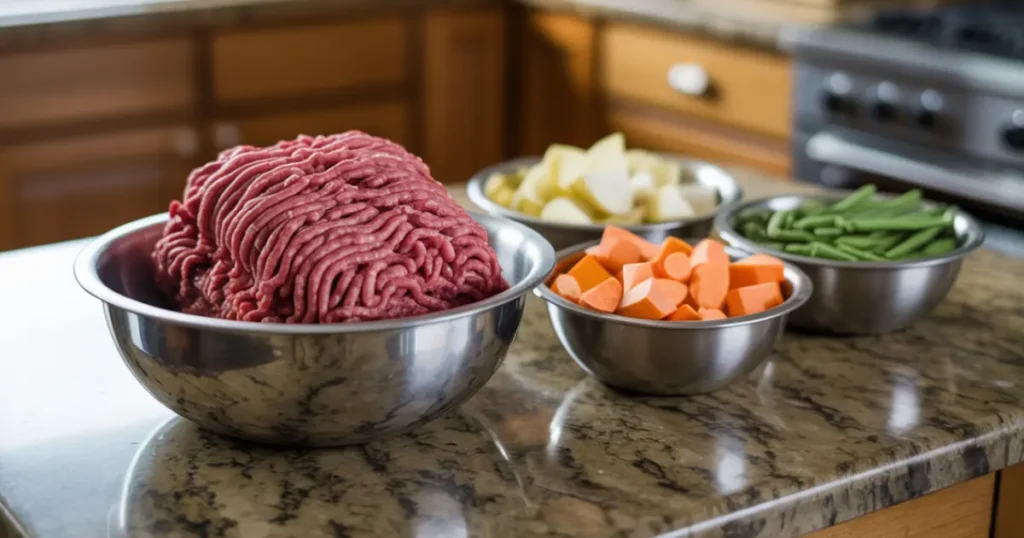
For a number of strong reasons, venison is a unique protein source. Unlike common proteins like chicken or beef, venison is naturally lean, containing less fat while delivering more protein per serving. This makes it perfect for active adult dogs who need sustained energy without excess calories when following a venison dog food recipe.
The protein quality in venison is remarkable; it contains all the essential amino acids your dog needs for muscle development and maintenance. Plus, venison is naturally free from hormones and antibiotics commonly found in commercial livestock, giving you peace of mind about what you’re feeding your companion with this venison dog food recipe.
Many dog owners discover that venison dog food recipe options work wonderfully for dogs who’ve grown tired of traditional proteins. It’s not necessarily for sensitive dogs, but rather for any dog owner wanting to provide variety and premium nutrition. If you’ve tried other homemade recipes like turkey dog food or beef treats, this venison dog food recipe offers a delicious next step in your homemade cooking journey.
Iron content in venison surpasses most other meats, supporting healthy blood formation and oxygen transport. The B-vitamin complex, particularly B12 and niacin, promotes nervous system health and energy metabolism, which are crucial for active dogs enjoying a venison dog food recipe.
Essential Ingredients for Perfect Homemade Venison Dog Food
Creating healthy venison dog food requires more than just meat. Each ingredient serves a specific nutritional purpose, working together to create a balanced meal that rivals any commercial food.
Ground venison forms the protein foundation of this recipe. Look for venison that’s 85-90% lean—too fatty and you’ll upset sensitive stomachs, too lean and you’ll miss essential fatty acids. Fresh ground venison works best, though frozen works perfectly if thawed properly.
Sweet potatoes provide complex carbohydrates that fuel your dog’s daily activities. Unlike simple carbs that cause energy spikes and crashes, sweet potatoes deliver steady energy while supplying beta-carotene for eye health and immune support.
Carrots add natural sweetness and crunch that most dogs love. They’re packed with vitamin A and fiber, supporting both vision and digestive health. Dice them large enough to add texture but small enough to ensure they cook through.
Green beans contribute essential minerals like potassium and magnesium while adding fiber for healthy digestion. They’re also naturally low in calories, making this recipe suitable for dogs maintaining a healthy weight.
Brown rice rounds out the carbohydrate profile with easily digestible energy and B vitamins. It also helps bind the ingredients together, creating a consistency most dogs find appealing.
For those who’ve enjoyed success with lamb recipes or pork dishes, you’ll appreciate how venison’s mild flavor pairs beautifully with these vegetables.
Complete Venison and Sweet Potato Dog Food Recipe
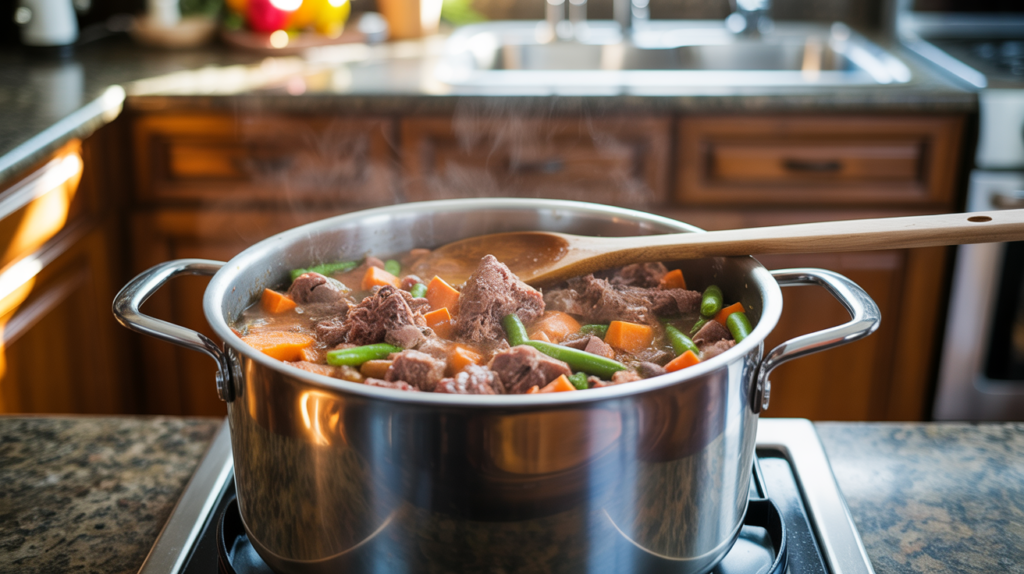
This DIY venison dog recipe serves approximately 6-8 cups, perfect for meal prep or feeding multiple dogs. From beginning to end, the entire process takes roughly 45 minutes.
Recipe Overview
- Prep Time: 15 minutes
- Cooking Time: 45 minutes
- Total Time: 60 minutes
- Yield: 6-8 cups (enough for a 40-pound dog for about a week)
- Storage: 4 days refrigerated, 3 months frozen
- Difficulty: Easy (your dog will think you’re a gourmet chef 🙂)
Ingredients:
- 2 pounds ground venison (85-90% lean)
- 2 large sweet potatoes, peeled and diced
- 1 cup brown rice
- 1 cup carrots, diced small
- 1 cup green beans, chopped
- 3 cups low-sodium chicken or vegetable broth
- 2 tablespoons olive oil
- 1 tablespoon dried parsley (optional)
Step-by-Step Instructions:
Step 1: Prepare Your Ingredients.
Wash and dice all vegetables into uniform, small pieces—about ½ inch works perfectly. This ensures even cooking and makes it easier for dogs to digest. Measure your brown rice and set everything within easy reach of your stovetop.
Step 2: Cook the Venison.
In a large, heavy-bottomed pot, heat the olive oil over medium-high heat. Add ground venison and cook for 6-8 minutes, breaking it apart with a wooden spoon. The meat should be completely browned with no pink remaining. Don’t drain the fat, it adds flavor and essential nutrients.
Step 3: Add Vegetables and Rice
Stir in diced sweet potatoes, carrots, green beans, and brown rice. Mix everything thoroughly so the ingredients are evenly distributed throughout the pot. The vegetables will start to soften slightly from the residual heat.
Step 4: Simmer to Perfection
Pour in the broth and bring the mixture to a boil. Once boiling, reduce heat to low, cover, and simmer for 25-30 minutes. Stir occasionally to prevent sticking. The sweet potatoes should be fork-tender, and the rice should have absorbed most of the liquid.
Step 5: Cool and Serve.
Remove from heat and let cool completely before serving. Stir in dried parsley if using; it adds a fresh flavor most dogs enjoy and provides additional vitamins.
| Ingredient | Quantity | Primary Benefit |
|---|---|---|
| Ground Venison | 2 lbs | High-quality protein, iron |
| Sweet Potatoes | 2 large | Complex carbs, beta-carotene |
| Brown Rice | 1 cup | Digestible energy, B-vitamins |
| Carrots | 1 cup | Vitamin A, fiber |
| Green Beans | 1 cup | Minerals, low-calorie fiber |
| Broth | 3 cups | Hydration, flavor enhancement |
Expert Preparation Tips for Best Results
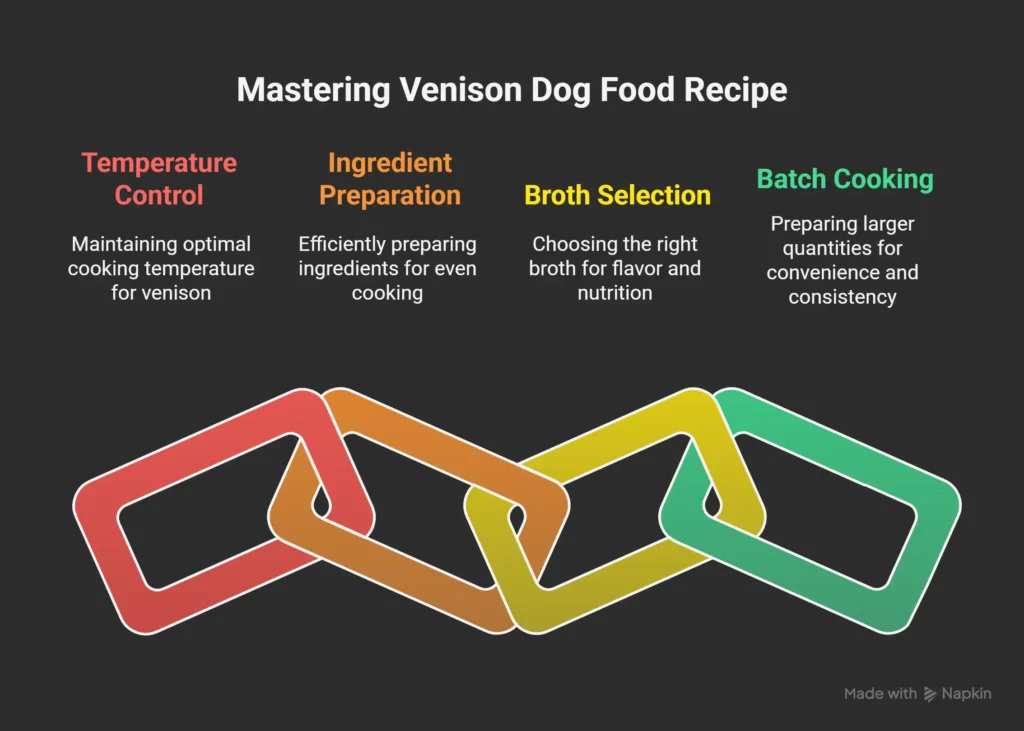
Temperature control makes the difference between good and great venison dog food recipe results. Keep your cooking temperature at medium-high for browning, then reduce to low for simmering. High heat throughout the process can make the venison tough and less appealing in your venison dog food recipe.
Ingredient preparation timing matters; dice vegetables while the venison browns to maximize efficiency. Uniform cutting ensures everything cooks evenly in your venison dog food recipe, preventing some pieces from being mushy while others remain hard.
Broth selection impacts both flavor and nutrition in any venison dog food recipe. Low-sodium chicken broth works wonderfully, but vegetable broth offers a lighter alternative. Avoid broths containing onion or garlic, as these can be harmful to dogs when preparing your venison dog food recipe.
Batch cooking saves time and ensures consistency with your venison dog food recipe. This recipe doubles easily if you want to prep your meals for the week. Just increase cooking time by 5-10 minutes to ensure everything cooks thoroughly in your larger venison dog food recipe batch.
Storage and Meal Planning Made Simple
Proper storage extends the life of your homemade venison dog food significantly. Cool completely before refrigerating; hot food raises your refrigerator’s temperature and can spoil other items. Store in airtight containers for up to 4 days in the refrigerator. Using freezer-safe bags or containers, divide the chilled food into portions the size of meals.
Thawing requires planning ahead. Move frozen portions to the refrigerator 12-24 hours before serving. Never use a microwave to thaw, as this can create hot spots that might burn your dog’s mouth.
Nutritional Benefits That Make a Difference
This healthy venison dog food delivers comprehensive nutrition that supports your dog’s overall health. The protein content supports muscle maintenance and growth, while the complex carbohydrates provide sustained energy for daily activities.
Iron from venison supports healthy blood formation, particularly important for active dogs or those recovering from illness. The bioavailable form of iron in meat absorbs more easily than in plant-based sources.
Fiber from vegetables promotes healthy digestion and can help maintain optimal weight. The combination of soluble and insoluble fiber supports beneficial gut bacteria while keeping your dog feeling satisfied.
Antioxidants from colorful vegetables help combat cellular damage and support immune function. Sweet potatoes and carrots provide beta-carotene, while green beans contribute vitamin C and folate.
Serving Guidelines for Different Dog Sizes
Portion control ensures your dog maintains a healthy weight while getting optimal nutrition. These guidelines work for most adult dogs, but individual needs vary based on activity level, age, and metabolism.
Small dogs (under 25 pounds) typically need ½ to 1 cup per meal, served twice daily. Monitor your dog’s body condition and adjust portions accordingly; you should be able to feel ribs easily but not see them prominently.
Medium dogs (25-60 pounds) usually require 1 to 2 cups per meal, also served twice daily. Active dogs may need slightly more, while less active dogs may need less to maintain optimal weight.
Large dogs (over 60 pounds) generally need 2 to 3 cups per meal, twice daily. Giant breeds may require even more, but it’s better to feed smaller, more frequent meals to prevent bloat.
Transition gradually when switching to homemade food. Start by replacing 25% of their regular food with this venison and squash dog meal approach, increasing by 25% every few days until you’ve completely transitioned. This lets their system adapt and avoids digestive distress.
Final Thoughts
Creating homemade venison dog food transforms mealtime from routine to celebration. Your dog will notice the difference immediately; the aroma alone will have them dancing with excitement. More importantly, you’ll have peace of mind knowing exactly what goes into every bite.
This recipe proves that healthy doesn’t have to mean complicated. With simple, wholesome ingredients and straightforward preparation, you’re providing restaurant-quality nutrition in your own kitchen. The best part? Watching your dog’s satisfaction and improved energy levels makes every minute of preparation worthwhile.
Remember, consistency matters more than perfection. Even if your first batch isn’t picture-perfect, your dog will appreciate the love and effort you’ve put into their meal. IMO, that’s what makes homemade food so special—it’s made with care, not just convenience 🙂
Frequently Asked Questions
Can I substitute other vegetables in this venison dog food recipe?
Absolutely! Peas, zucchini, and spinach work well as substitutes. Avoid onions, garlic, mushrooms, and grapes as these can be toxic to dogs. Keep vegetables to about 25% of the total recipe to maintain proper nutritional balance.
How do I know if my dog is getting complete nutrition from homemade food?
This recipe provides excellent nutrition for healthy adult dogs, but long-term feeding of exclusively homemade food should be discussed with your veterinarian. They can recommend appropriate supplements if needed and monitor your dog’s health through regular check-ups.
Can puppies eat this venison dog food recipe?
Puppies have different nutritional needs than adult dogs, requiring higher protein and fat content, plus specific vitamin and mineral ratios. Consult your vet before feeding homemade food to puppies under 12 months old.
What should I do if my dog has loose stools after eating this recipe?
Transition more slowly by mixing smaller amounts with their regular food over 7-10 days instead of 4-5 days. If loose stools persist, reduce the vegetable content slightly or consult your veterinarian to rule out other causes.
In comparison to store-bought food, how much does it cost to make your own venison dog food?
Costs vary by location and venison source, but homemade venison food typically costs $3-5 per pound compared to $2-8 per pound for premium commercial foods. The investment in quality ingredients often pays off in better health and fewer vet visits.
References and Resources
For additional homemade dog food recipes and nutritional guidance, explore these helpful resources:
- 6 Best Homemade Meat Dog Food Recipes – Comprehensive guide to various protein sources
- American Kennel Club Canine Nutrition Guidelines
- Pet Nutrition Alliance – Nutritional adequacy standards for dogs
- Veterinary Nutritionists Association – Professional feeding recommendations
Your Dog Tried It? Drop a Review Below!
There are no reviews yet. Be the first one to write one.

